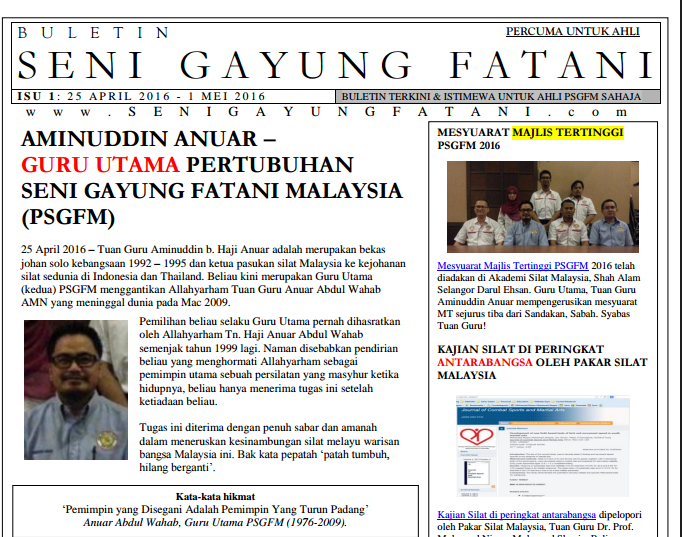Many people love to watch advance self defense moves either in the movie or in martial art competition. Every martial art has it owns identity and philosophy. For example, taekwondo emphasize more on fast kicks of speed in any combat situation. While aikido and jujitsu tend to catch, lock and make the opponent fall on the ground. So, it is important for every individual that wanted to learn martial art to know the uniqueness for every martial art before making any decision to learn it.
One of the top martial arts in Asia is Silat. It is known by many martial artists due to the uniqueness of fighting movements and techniques that applied in the fight. The fighting action in silat is also called as tempur silat. However, student needs to learn the soft technique first before learning the hard technique.
Tempur silat or silat combat is divided into two which are; Tempur Seni (the art of self defense combat) and Tempur Beladiri (the fast action of combat sparring). The main reason of this division is to emphasize the concept and meanings of two difference style in silat combat. Tempur seni emphasize more on ecstatic value of silat with specific do and don’t rule. Tempur beladiri emphasize more on fast silat movements in order to fight with more than one opponent.
In addition, there is one secret technique in silat that helps many silat students to master the silat combat fast that known as Gerak Pantas. It means the action of attacking and defending movements that required fast, neat and effective actions that mimicked to real combat sparring. Silat combat maintains the characteristics of silat mode either in attacking or defending positions. The use of Sikap Pasang (to receive or to attack position), Langkah (steps) and Serang Bela (self defense techniques) are critical in order to plan the self defense moves in any fighting situation.
Meanwhile, the tempur seni combat consists of Tapak Empat (the silat movements in square pattern), Lilit (circling around the opponent) and Galah Panjang (marking the distance between each other). Tempur seni also used three types of strikes that based from traditional silat weapon system which are; Tikam (stabbing), Parang (chopping) and Tetak (hacking or notching). These strikes usually followed by seven receiving techniques which are; Tangkap (catching), Sentak (to pull at or out with a jerk), Kedu (to flex the arm down), Tindih (one on the top of the other), Sisip (to insert), Sagang (to be in silat alert position) and Potong (to counter attack). The silat exponent will learn the art of martial art fighting while practising all of these receiving techniques. It is better to practice these techniques with variety of opponent of different height, weight and size in order to understand the differences of strength and weakness levels.
In tempur beladiri, silat exponent will learn the unarmed self defense first before learns on how use weapon in advance level. This is important because silat exponent needs to master all the unarmed technique first in order to avoid any injuries in silat training. All the silat lessons will be given by the silat coach step-by-step for better understanding.
Thus, it is important for silat exponent to master both of these combat styles because both topics will help them to increase the level of fighting and understanding of self defense moves in silat combat. When the students master all the techniques as mentioned before, they can fight with any martial artists other than silat too.
This article was submitted by Cikgu Nizam, an expert and world leading silat and self defense coach online. Did you find these tips on self defense moves article useful? Find out more about self defense and silat by going to Self Defense Moves Blog and get a FREE ebook there.
Article Source: http://EzineArticles.com/?expert=Cikgu_Nizam





Leave a Reply
You must be logged in to post a comment.